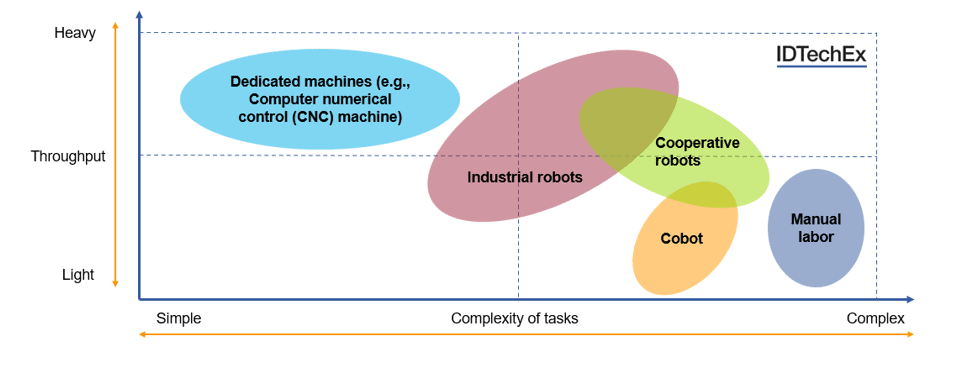What’s the Word? The Language of Logistics

IL breaks down the logistics terms gaining traction in 2023 (from social commerce to footprinting) as well as defines the basic concepts that keep cargo moving.
Robot Roll Call
Collaborative vs. Cooperative
Collaborative robots, also known as cobots, refer to robots that work side-by-side with human operators. Cobots share the same working space as humans.
Cooperative robots are similar to collaborative robots, but have a virtual fence between themselves and human operators. The cooperative robot can handle tasks of greater complexity and increased throughput.
Source: IDTechEx
Logistics refresher
Taking a Load off
Drayage is a form of short-haul transport, usually within a single urban area. Unlike long-haul shipping, it’s typically completed within a single shift.
Cross docking involves transferring cargo or goods directly from the inbound transportation mode to the outbound one.
Container devanning refers to the process of systematically unloading cargo using a counterbalance forklift or other heavy machinery.
Visit IL’s Knowledge Center to explore the language of logistics: bit.ly/ILKnowledgeCenter
Say What?
Logtech
In 2023, logtech (logistics technology) will begin to take shape much like fintech did in its early stages. As fintech today enables almost any company to become a bank, eventually logtech will enable almost any company to become a carrier. With the chaos of the past several years subsiding, logistics and supply chain managers can be less reactive and more proactive—learning how they can use the new technology to take more control of transportation.
—Chad Schofield
Co-Founder & Chief Digital Officer
BoxC
2023 E-Commerce Buzzword
Social Commerce
This trend refers to consumers completing the entire purchase within the social media platform, be it TikTok, Instagram, or Facebook.
Retailers are taking notice—especially since a viral video on TikTok can cause demand to spike overnight (think CeraVe’s suddenly in-demand facial cleanser).
Social commerce shopping increased 37% in 2022 to $37 billion and is expected to hit $80 billion by 2025, according to McKinsey & Co. Not surprisingly brands are making heavy investments in social commerce.
SPEAKING OF SUSTAINABILITY
Footprinting
Manufacturers and retailers perform life cycle analysis on their products to ascertain their environmental impacts. Historically, this product “footprinting” exercise was both tedious and expensive. Typically, product life cycle studies included just a handful of products, and results were extrapolated to similar products.
Now organizations are devoting resources to make the product life cycle assessment process more automated and streamlined. The goal is to create templates allowing you to generate product environmental footprints efficiently, thereby increasing the throughput of the process without requiring highly specialized domain expertise. We’ll begin to see a lot of progress in this particular area of sustainable supply chain transformation.
—Stanton Thomas, Senior Vice President, Sustainability Solutions, o9 Solutions
